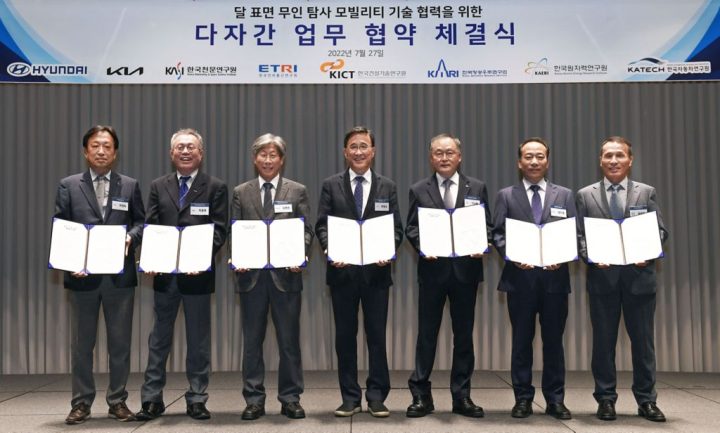
Space exploration has been an ongoing challenge for the human race, starting way back in the 50s and 60s. Back then it was a challenge of country vs. country, now though it seems anybody can get into it, even automakers just like Hyundai.
Hyundai Lunar Rovers
Last July the Hyundai Motor Company, signed a joint research agreement with 6 Korean institutes that specialize in the aerospace sector. This agreement is supposed to yield vehicles that are designed for lunar surface exploration.
The announcement follows Korea’s successful launch of a domestically produced rocket in June last year. “We have taken the first step towards transforming our vision for robotics and the concept of Metamobility into reality. We will expand the scope of human movement experience beyond traditional means of transport and beyond the bounds of Earth to further contribute to the progress of humankind and help create a better future,” said
The signing ceremony held in Korea was attended by Chung Kook Park, President and Head of the R&D Division of Hyundai Motor and Kia as well as top officials from the six research institutes: Korea Atomic Energy Research Institute (KAERI); Korea Aerospace Research Institute (KARI); Korea Astronomy and Space Science Institute (KASI); Korea Automotive Technology Institute (KATECH); Korea Institute of Civil Engineering and Building Technology (KICT); and Electronics and Telecommunications Research Institute (ETRI).

With collaboration expected to start as early as August, the consultative body will define the concept of lunar exploration mobility and major core technologies while developing and reviewing specific strategies and implementation measures to operate on the moon. Hyundai Motor and Kia will support the consultative body with their smart mobility technologies.
Under the multilateral research agreement, the participants from the private and government sectors will integrate their knowledge and capabilities to significantly advance their existing technologies and engineer new solutions for moon exploration mobility. Expertise will be brought to bear across numerous areas, including exploration equipment, software for mobility operation, and remote communication functionality.
With no air, extreme temperatures, and countless craters and coatings of lunar dust of sharp and abrasive particles, the moon’s surface is an exceptionally harsh environment. While it poses significant challenges to the development of surface exploration mobility, it also provides the ultimate proving ground and will deliver invaluable lessons for Hyundai and Kia to further accelerate the delivery of smart and sustainable mobility solutions on Earth.
Hyundai and Kia have formed an internal consultative body with key personnel for the development and operation of lunar surface mobility. Resources will be brought to bear from Hyundai and Kia’s Robotics Lab in charge of robot development. Hyundai and Kia will also collaborate on software and hardware design and interpretation, space environment response technology, and special equipment for conducting lunar exploration missions.


